
License plates rarely stay clean and in good condition for long. While mounted to a vehicle, they get splashed with dirt, mud, salt, snow, bugs, stones, and years of temperature extremes and UV exposure. After being removed, they might be set aside out of the elements...or they might be unceremoniously tacked to a garage wall or barn roof; left exposed to rust away for many years more. License plates almost always need to be cleaned or reconditioned before being appreciated as collectibles...and if there's any tip I can give, it's that a good amount of hobby time is spent over the sink!
There are many ways to clean license plates, and some of them aren't very intensive at all. My first weapon of defense is the most prosaic: Soap or detergent, water, and a washcloth. For recent plates in relatively good condition, this is often all that's necessary to prepare them for display or storage. If a thick layer of dirt or greasy crud is caked on to the back, a scouring pad and elbow grease will do.
Rust stains (as opposed to actual rust) may be removed with Comet, or any other scouring powder containing bleach. Typically I'll wet the surface, sprinkle the powder on, wait for it to soak for a few minutes, scrub the affected areas with an old soft-bristle toothbrush, and repeat if necessary. This works wonders on newer plates with Scotchlite sheeting, but I'm hesitant to try it on older ones.

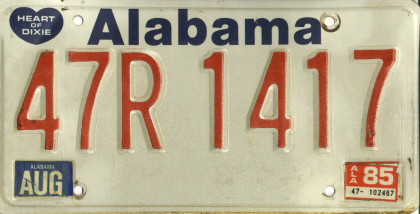


Before Comet (left) and after (right).
An ordinary rubber pencil eraser can remove dust and dirt, bring out original gloss, and remove surface oxidation from the surface of painted plates. (It won't do much on Scotchlite, though.) My '85 California looked both darker and bluer after putting it through this treatment. (I also took the liberty of touching up the month sticker to make it look more displayable, until a better plate came along...use the same judgment and disclosure that you would anywhere when repainting plates.)


This 1939 Wisconsin also shined up considerably after a simple scrub with a Pink Pearl:
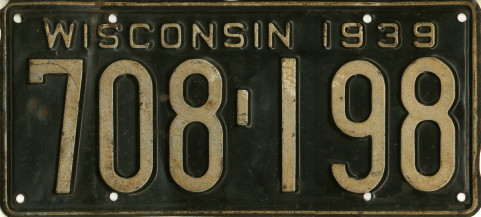
Through Jon Upton, I discovered the technique of using CLR...the acidic kitchen and bathroom cleaner...as a tool for removing rust outright from older plates. This technique can be hit or miss, as paint consistencies vary wildly and two different plates in similar condition may produce wildly dissimilar results. Even so, CLR is potent and the closest thing to a miracle cleaner I've used so far. The first guinea pig of my experimentation was a 1925 Illinois, where I scored some very solid results:
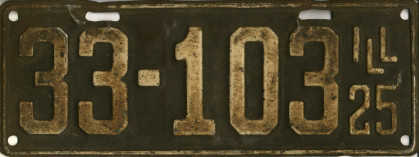
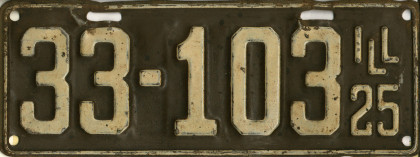
I soaked the plate in a shallow vat of CLR for half an hour, then scrubbed the surface with cotton pads. As I anticipated, it turned out beautifully; easily jumping from fair to good in condition. The paint was hardy, not chalky, and the rust stains on the numbers lifted off with a modicum of effort. The background cleared up similarly: It was tar black when I started, but after cleaning it was the shade of dark brown that it should be.
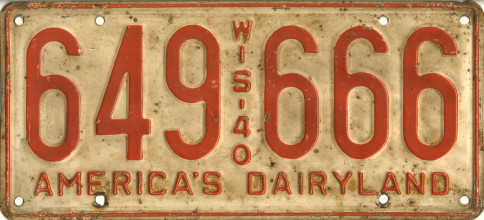

A splotchy 1940 Wisconsin was another success story; brightening up considerably after being soaked in CLR for an hour and a half. I had to be careful, though, as the red paint was liable to come off if I rubbed the surface too hard. Longer soaks in the chemical are more likely to remove rust, but soften the paint considerably.


This '32 Wisconsin was more of a challenge, and more of an ambiguous result. After being soaked for two hours, there was seemingly no change at all. But after letting it air out a bit, I scrubbed and scrubbed and was able to lighten the background to the same shade of yellow as the better half of the pair (below), which I left alone. The color was definitely brighter than it used to be, but there wasn't much I could do about the pockmarking of the background paint and I dealt with a bit of paint loss on the numbers.
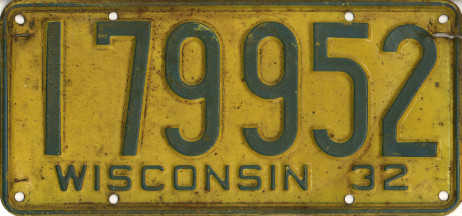
The biggest challenge of my experiments was a 1920 Wisconsin truck plate. No paint was left on the raised surfaces, and whatever was left of the background was completely subsumed by surface rust. Still, I had nothing to lose...and after a very long soak and scrub, about half of the original background paint became visible by the end. Sadly these plates were colored rust-brown when new, so you may have to take my word on it.
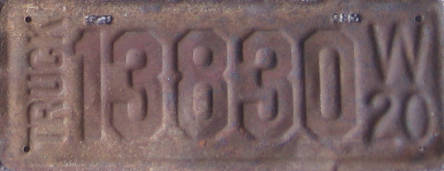
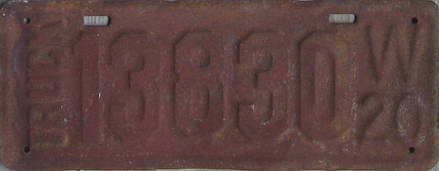
After Phase 1 was done, I decided to continue my experiments by making the '20 the canvas of my first amateur repaint job...an exercise in either brilliance or stupidity:
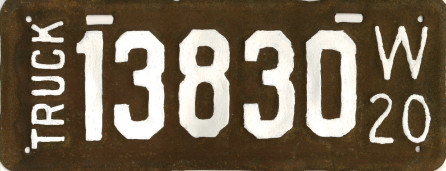
CLR generally seems to be a better technique for plates with dark backgrounds than light ones, since flaws such as pockmarking won't be as visible. Use your educated judgment, though...especially when portions of the background paint are missing entirely. I gave this 1942 Wisconsin a soak and scrub in the CLR bath, exposing some bare metal in the process. In retrospect, I would have been better off leaving it alone: The flaws were less conspicuous and blended in with the background better when they were rust-brown.

Also, don't try CLR on a plate with Scotchlite reflective sheeting. It'll remove the rust, but it'll also cause the sheeting to blister, peel, and crumble wherever a breach in the coating exists.

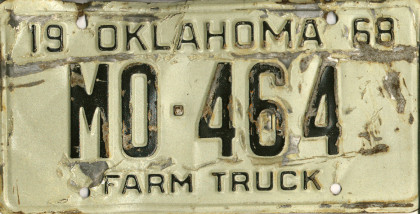
While digging through piles of plates looking for August 1985 expirations for my birthyear run, I've sometimes had to create what I need by taking August '86s, '87s, and beyond and paring down the sticker stack. The most convenient way to do this is to heat the corner of the plate with a hair dryer for half a minute. Once the adhesive is softened, you can catch the corner of the undesired sticker(s) with your fingernail and carefully peel them off without damaging anything underneath. Occasionally, hot water will have the same effect...so be careful when washing plates, or you might wind up removing stickers without even trying!
When approaching this topic, "use sound judgment" is a lesson that can't be stressed strongly enough. Be aware of historical context and accuracy: A black California plate pared down to the 1960s in the right sticker well will be inaccurate if you leave the month sticker in the left well, since those weren't introduced until 1976. If you peel a plate with 25 years of wear down to a single year sticker, it will look ridiculous no matter what it is. And if you indiscriminately "naturalize" all the plates in your trade box in the hope of boosting the values...you are not going to win any friends in the hobby at all.
I currently keep most of my collection stashed in Sterilite plastic containers. They're the right size for about 50-60 plates each, they're stackable, and they're also long enough to accomodate things that are slightly oversize such as 1930s and 1940s Wisconsin.

It's best to store license plates in a cool, dry place. Although hunks of aluminum might seem impervious to temperature and humidity fluctuations, don't be too confident about your collection. A good number of recent plates with 3M reflective sheeting (particularly those from the 2008-09 timeframe) are prone to quickly deteriorating and turning gray after being subjected to some combination of heat and humidity...even if they've been placed in storage the entire time.
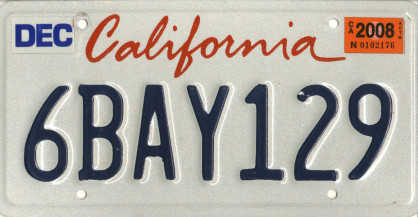
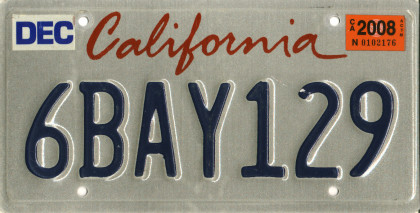
The same plate...before it spent a summer in a storage unit, and after.
It's a good idea to use rubber gloves when handling chemicals, when cleaning license plates or otherwise. Please don't complain to me if you dissolve your hands in acid by not doing so.